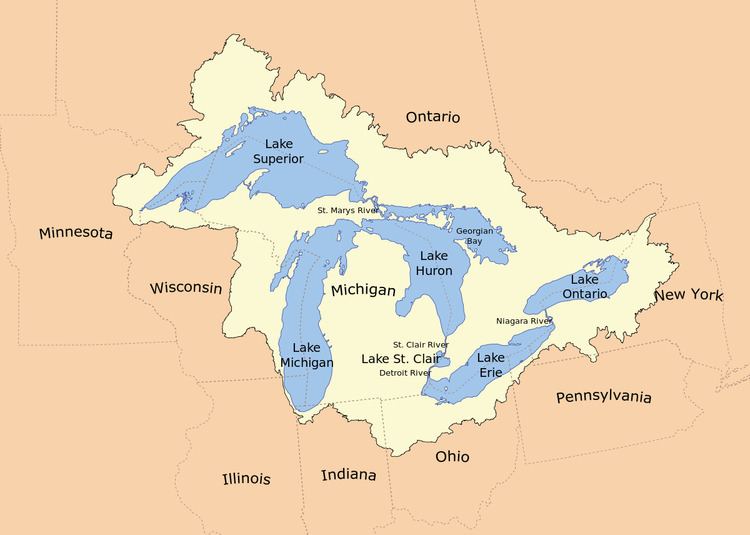 | ||
The Great Lakes Basin consists of the Great Lakes and the surrounding lands of the states of Illinois, Indiana, Michigan, Minnesota, New York, Ohio, Pennsylvania, and Wisconsin in the United States, and the province of Ontario in Canada, whose direct surface runoff and watersheds form a large drainage basin that feeds into the lakes. It is generally considered to also include a small area around and beyond Wolfe Island, Ontario, at the east end of Lake Ontario, which does not drain into the Great lakes, but into the Saint Lawrence River.
Contents
Demographics
The basin is home to 33 million people. The basin hosts eight of Canada's 20 largest cities, including Toronto, Hamilton, London, St. Catharines, Niagara, Oshawa, Windsor, and Barrie. The United States cities of Duluth, Milwaukee, Chicago, Gary, Detroit, Toledo, Cleveland, Erie, Buffalo, and Rochester, are located on shores of the Great Lakes.
Sub-basins
Each individual lake forms a sub-basin, such as the Lake Erie Basin, and each sub-basin consists of multiple watersheds, such as Pennsylvania's Lake Erie Watershed. The overall Great Lakes Basin is monitored by the binational Great Lakes Commission.
St. Lawrence Basin
Quebec, a portion of whose lands drain into the St. Lawrence Basin, is a signatory to the Great Lakes Charter of 1985, the 2001 Charter Annex, and the Agreements of 2005. While not a part of the Great Lakes Basin, Quebec's position along the Saint Lawrence Seaway makes it a partner in water resource management with Ontario and the eight US states mentioned above.
Nuclear power plants
There are 38 nuclear power plants in the Great Lakes Basin. The influence of these power plants and the waste they produce must be combined to ascertain the impact on the Great Lakes Basin.
